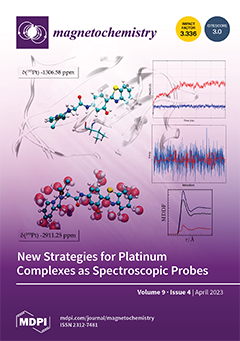Erbium-doped cadmium selenide thin films grown on 7059 Corning glass by means of a chemical bath at 80 °C were prepared. Doping was performed by adding an aqueous Er(NO3)
33·H
2O dilution to the CdSe growth solution. The volume of Er doping solution was varied to obtain different Er concentration (
x at%). Thus, in the Cd
1−xEr
xSe samples, the
x values obtained were in the 0.0–7.8 at% interval. The set of the CdSe:Er thin films synthesized in the hexagonal wurtzite (WZ) crystalline phase are characterized by lattice parameters (a and c) that increase until
x = 2.4% and that subsequently decrease as the concentration of
x increases. Therefore, in the primitive unit cell volume (UC), the same effect was observed. Physical parameters such as nanocrystal size, direct band gap (
Eg), and optical longitudinal vibrational phonon on the other hand, shift in an opposite way to that of UC as a function of
x. All the samples exhibit photoluminescence (PL) emission which consists of a single broad band in the 1.3 ≤ hν ≤ 2.5 eV range (954 ≥ λ ≥ 496 nm), where the maximum of the PL-band shift depends on
x in the same way as the former parameters. The PL band intensity shows a singular behavior since it increases as
x augments but exhibits a strong decreasing trend in the intermediate region of the
x range. Dark d.c. conductivity experiences a high increase with the lower
x value, however, it gradually decreases as
x increases, which suggests that the Er
3+ ions are not only located in Cd
2+ sites, but also in interstitial sites and at the surface. Different physical properties are correlated among them and discussed considering information from similar reports in the literature.
Full article





